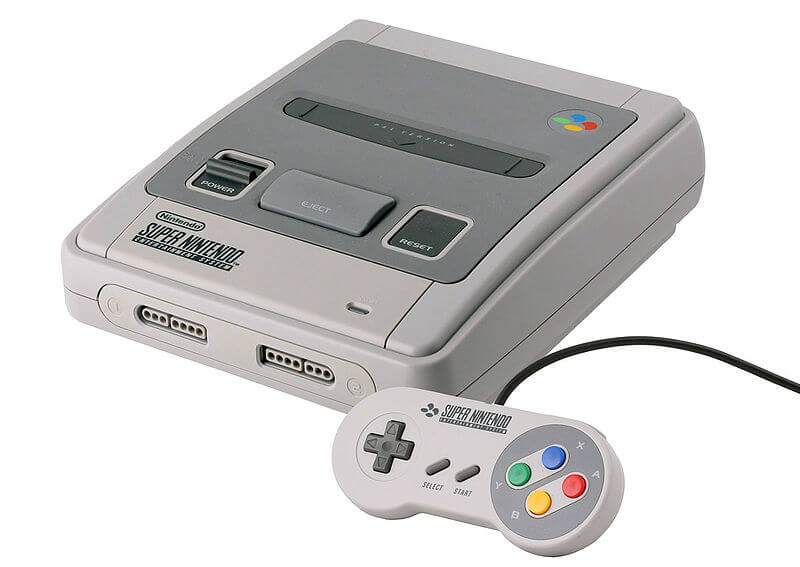About the SNES

Super Nintendo Entertainment System
The Super Nintendo Entertainment System (SNES), also known as the Super Famicom in Japan, was a 16-bit home video game console developed by Nintendo that was released in 1990 in Japan and South Korea, 1991 in North America, 1992 in Europe and Australasia, and 1993 in South America.
The SNES was Nintendo's second home console, following the Nintendo Entertainment System (NES). The console introduced advanced graphics and sound capabilities compared with other consoles at the time. The development of a variety of enhancement chips integrated in game cartridges helped to keep it competitive in the marketplace.
The SNES was a global success, becoming the best-selling console of the 16-bit era despite its relatively late start and the fierce competition it faced in North America and Europe from Sega's Genesis/Mega Drive console.
Technical Specifications
- Processor: Ricoh 5A22 @ 3.58 MHz
- Resolution: 256 x 224 or 256 x 240
- Colors: 32,768
- Sound: Sony SPC700, 8-channel ADPCM
- Controller: 8-way D-pad, 6 face buttons, 2 shoulder buttons
- Media: ROM cartridge
Sales & Distribution
- Units Sold: 49.10 million worldwide
- Americas: 23.35 million
- Japan: 17.17 million
- Other: 8.58 million
- Release: 1990 (Japan), 1991 (North America), 1992 (Europe)
- Discontinued: 1999 (North America), 2003 (Japan)
Legacy
- Best-selling console of the 16-bit era
- Introduced iconic franchises and sequels
- Pioneered advanced graphics capabilities
- Featured innovative controller design
- Home to many critically acclaimed games
- Continues to influence modern game design
Frequently Asked Questions
Discover more about the legendary Super Nintendo Entertainment System with these commonly asked questions.
SNES Controller

The SNES controller introduced several innovations that have influenced controller design to this day. It featured a more ergonomic design compared to the rectangular NES controller and introduced the iconic four face button diamond layout (A, B, X, Y) that is still used in modern controllers.
The controller also added two shoulder buttons (L and R), bringing the total to eight buttons including Start and Select. This expanded button layout allowed for more complex gameplay and control schemes, which developers took advantage of in creating more sophisticated games.
The SNES controller's design was so successful that its basic layout—a directional pad on the left, face buttons on the right, and shoulder buttons on top—has remained the standard template for game controllers across multiple platforms and generations.